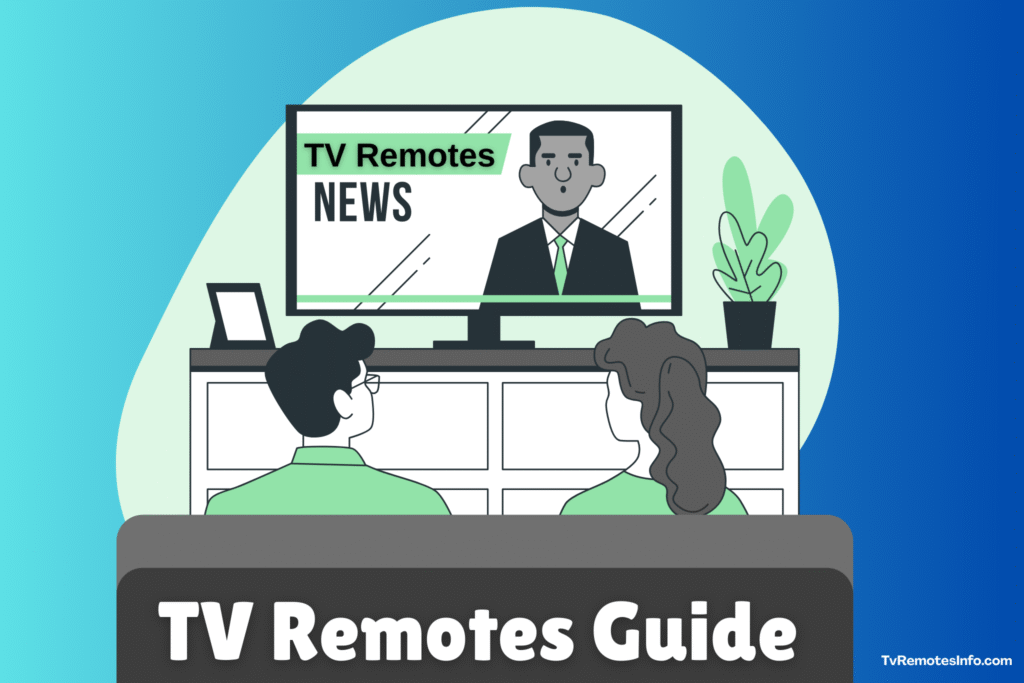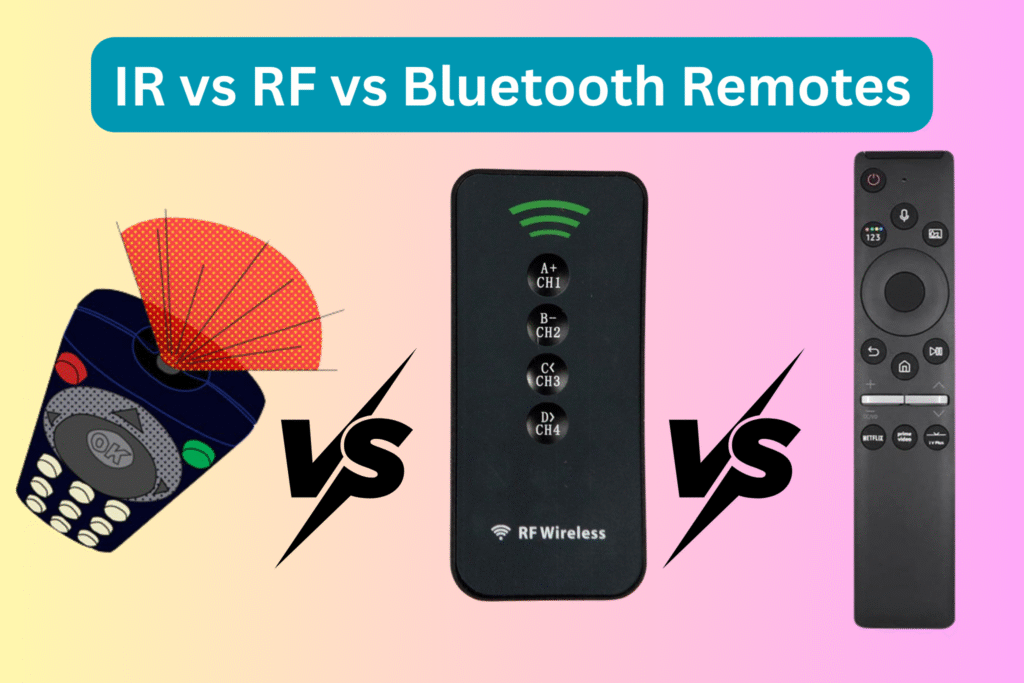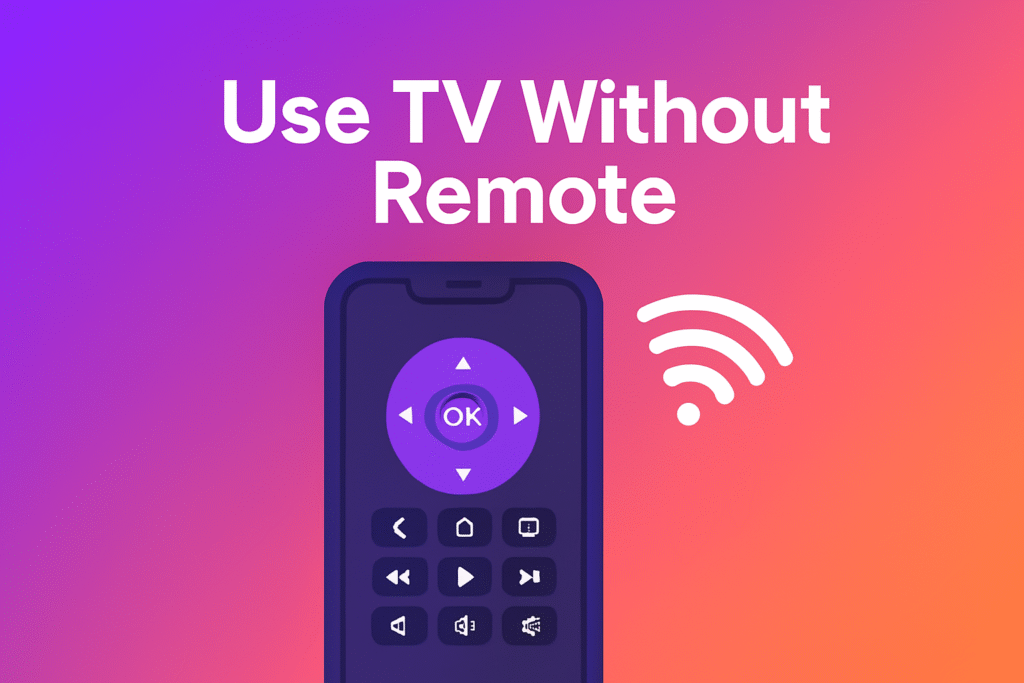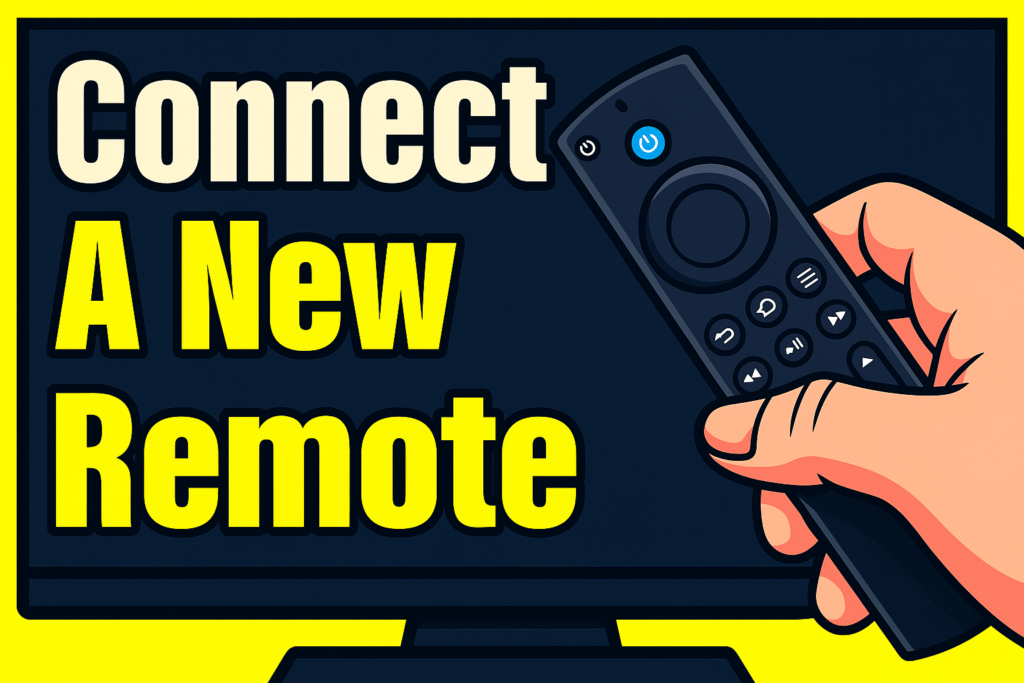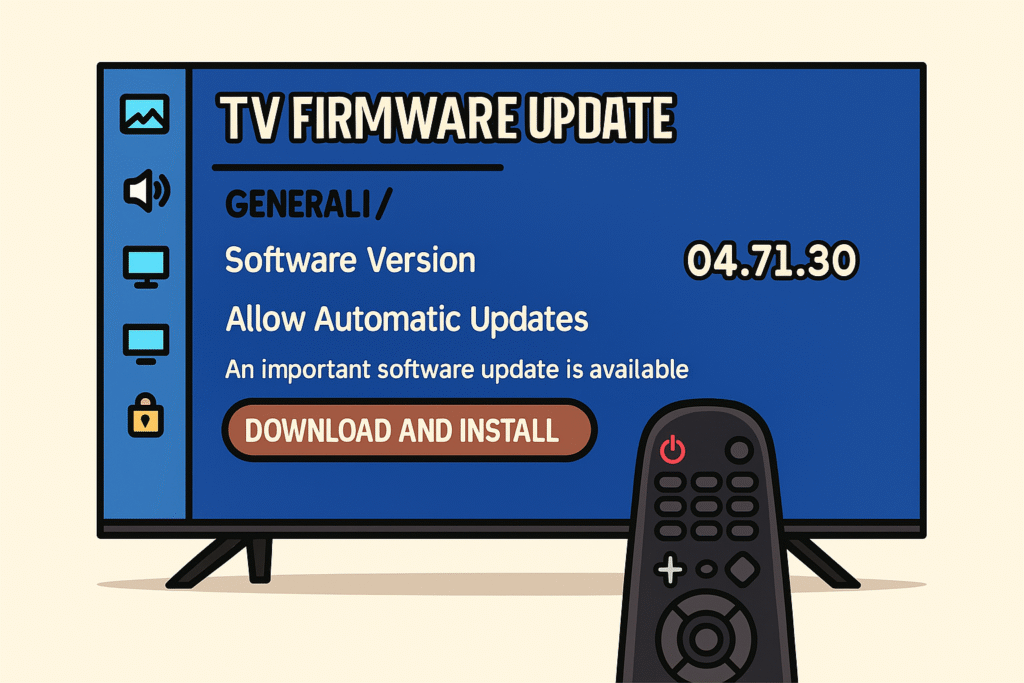Not every remote control is created equal when it comes to TV remote controls. Various brands provide different features, designs and compatibility degrees with smart devices.
A TV remote has been developed since the invention of the first wireless model, the Zenith Flash-Matic in the 1950s to become complicated smart home controllers.
With the next generation of television, remote control, combined with voice, universal, and application-based variants, enhanced the remote control. This guide will also offer a detailed discussion on the different kinds of remote controls, troubleshooting tips, and outlook of remote technology in future. And will enable viewers to easily and comfortably access the constantly evolving world of home entertainment.
Here we will explain the universal remote controls, what they are, what features they can do, what devices they are compatible with and when they are most useful. Also, when you have more than one device and whether you have heard of such a remote control or not and whether you are thinking of buying one.
We will give you the full story. From history to setup. From quick fixes to codes. From brand problems to the best picks in 2026. Get ready for the secrets every TV owner should know!
What is a TV Remote?
A remote or clicker, also called a remote control, is an electronic gadget that is used to remotely control another electronic device, typically without any wires. Consumer electronics, a television set, DVD player or other digital home media appliance can be operated by a remote control.
The Surprising Birth of TV Remote Controls
In the 1950s, Zenith made the first remote. They called it Lazy Bones. It worked with a wire across the room. People liked the idea but hated the cord.
Zenith then tried Flashmatic. It used light to control the TV. No wires. Just point and click. Cool for the time, right? But sunlight often fooled it. On bright days, the TV switched channels by itself.
In the 1980s, IR remotes became popular. Point at the TV and click, it worked. Then the RF remotes came. They worked from anywhere in the room. The 1990s brought universal remotes. One device controlled many gadgets. By the 2000s, smart remotes arrived. They added voice, apps, and touch screens.
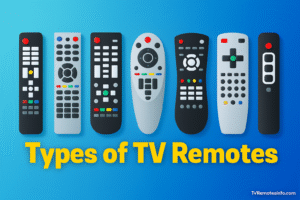
Types of TV Remote Controls:
TV remote controls may look the same, but they don’t all work in the same way. Some use light, some rely on radio waves, and some connect with Bluetooth.
On top of that, you’ll find different styles: smart remotes, universal remotes, or brand-specific models like the Samsung TV Remote, LG TV Remote, Fire TV Stick Remote, and Roku TV Remote.
Let’s break them down so you can know the different kinds of TV remotes easily.
IR vs RF vs Bluetooth Remotes
- IR Remotes use infrared light. You must point them straight at the TV. They’re cheap and common in brands like Vizio and Sony, but even a coffee table can block the signal.
- RF Remotes use radio waves. You don’t need to aim. Some Dish Remotes and Roku Remotes work this way. They cost more but give real comfort.
- Bluetooth Remotes pair like wireless earbuds. Fire TV Remotes, Google TV Remotes, and LG Smart TV Remotes fall in this group. They support voice search and smart features, but sometimes drop the connection.
Visit if you’d like to know more about IR vs RF vs Bluetooth remotes.
Smart remotes vs Universal vs Brand-specific
Smart Remotes like the Samsung Smart TV Remote or the LG Magic Remote include voice, apps, and even touch controls. Perfect for modern smart TVs.
Universal Remotes such as RCA Universal Remote, GE Universal Remote, or One For All Universal Remote can control TVs, sound bars, Blu-ray, and streaming sticks. They cut clutter, but the setup can confuse new users.
Brand-specific remotes (Samsung TV Remote Replacement, Vizio Remote Control, Sony Bravia Remote) work smoothly with one brand. They deliver the best match but can’t handle other devices.
Pros and Cons: Strengths & Weaknesses
IR Remote: Cheap, reliable, but needs line of sight.
RF Remote: Works anywhere, but costs more.
Bluetooth Remote: Smart features, but may drop connection.
Smart Remote: Modern, but pricey.
Universal Remote: One for all, but tricky to program.
Brand-Specific Remote: Best fit for one TV, but limited.
How TV Remotes Work: The Basics
TV remotes are used to operate your TV and they connect via either infrared (IR), radio frequency (RF) or Bluetooth.
- Infrared (IR): Most common. Transmits instructions through pulses of light. Needs to see TV–classified as need not go through objects.
- Radio Frequency (RF): Radio waves are in use. Is able to pass through walls/furniture and does not have to point directly at the television.
- Bluetooth: Radio waves also are used. Proposals establish short-range communication (less than 30 feet). Can be found on smart remotes with options such as voice control.
Line of Sight vs Non-Line of Sight
- IR remotes IR remotes require a transparent line of vision to the TV sensor.
- Both RF and Bluetooth remotes do not require line of sight, which makes them more adaptation-friendly.
Comparison Table
| Remote Type | How It Works | Pros | Cons | Best For |
| IR Remote | Infrared light | Cheap, easy to replace, widely used | Needs direct aim, blocked easily | Basic users (Vizio, Sony, Panasonic |
| RF Remote | Radio Frequency | Works anywhere, no aiming | Cost more, fewer options | Families, Dish, and Roku TV users |
| Bluetooth | Wireless pairing | Voice search, smart features | Needs pairing, may drop signal | Fire Stick, Google TV, and LG Smart TV owners |
| Smart Remote | Voice, apps, touch | Advanced control, app integration | Higher price, only for smart TVs | Samsung Smart TV, LG Magic Remote Fans |
| Universal | Multi-device codes | Controls TV + sound bar + players | Setup may confuse beginners | RCA, GE, One for all users with many devices |
| Brand Specific | Fixed to one brand | Smooth, best fit for that brand | Limited to the brand only | Samsung, LG, Vizio, Sony loyal Owners |
Zigbee / RF4CE Remotes
RF4CE and Zigbee are low-power wireless standards specifications, which are oriented towards low-latency communication. They are commonly utilised in smart house systems, cable boxes and high-tech television systems. When your installation includes a cable company or an integrated smart home, there are good odds you are already using Zigbee or RF4CE without knowing it.
Advantages:
- Reduced energy consumption, i.e. extended battery life.
- Very low resistance to interference compared with generic RF.
- The capacity to facilitate two-way communication (remote and device exchange information).
Wi-Fi Direct Remotes
The Wi-Fi Direct remotes are based on the same technology as the one that connects your phone or laptop to the internet. Wi-Fi Direct does not pass through your home router, but establishes a peer-to-peer connection between a remote device and the TV.
Advantages
- High bandwidth, enabling sophisticated functionality such as video streaming from a remote to a television set.
- Stable connections without much interference, as compared to Bluetooth.
- It can be used not only with TV can also sometimes supports gaming or content casting.
Drawbacks
- Greater battery current relative to IR or RF.
- Wi-Fi Direct remotes do not work on all TVs.
- Slightly more expensive.
Smartphone & App-based Remotes
Google TV app, Apple TV Remote app, and Roku mobile app are all apps that can be used to fully control TVs and streaming sticks. They come in particularly useful when the physical remote gets lost or ruined.
Advantages
- You carry your phone everywhere–you do not need an additional device.
- It is easy to type or search using touchscreen controls.
- There are built-in advanced features such as voice search and app integration.
Drawbacks
- TV and phone must be on the same Wi-Fi network.
- Not necessarily as fast as a physical button remote.
- The phones lose power quickly, whilst traditional remotes last longer.
Best-Selling TV Remote Controls and Top Picks for 2026
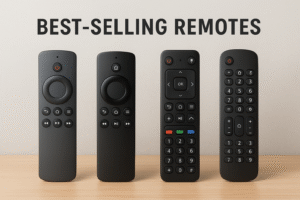
TV remote controls keep evolving, and 2026 brings some clear winners. These models stand out for their features, ease of use, and trusted brand support. Here are the best-selling picks with real prices in the USA.
The Roku Voice Remote Pro remains a favorite for streaming fans. At $29.99 (Best Buy), it offers hands-free voice search, private listening with headphones, and a rechargeable battery.
Amazon’s Alexa Voice Remote Pro also ranks high. Priced at $27.99 (Best Buy, often on sale), it adds backlit buttons, customizable shortcuts, and quick Alexa access.
Samsung’s sleek SolarCell Remote catches attention with an eco-friendly design. It costs $59.99 on Samsung’s store and often drops to $49.99 at Best Buy. No batteries needed, it charges with light.
LG users love the LG Magic Remote MR23GN, priced at $49.99 (LG Store). It supports motion control, voice commands, and easy pairing with LG TVs.
For budget buyers, the Vizio Voice Remote (XRT270R) is a strong choice at just $19.99 (Vizio Shop). It includes voice support and quick app buttons.
Google’s Voice Remote for Chromecast with Google TV keeps things simple at $19.99 (Google Store). Compact and intuitive, it makes streaming smooth.
If you want one remote for all, the GE 4-Device Backlit Universal Remote is unbeatable at $7.23 (Home Depot). Affordable and reliable, it handles TVs, sound bars, and more.
For advanced users, the One For All Smart Control PRO 6 sells for $59.99 (Best Buy). It controls up to six devices, including smart TVs, sound systems, and streaming boxes.
These picks prove that whether you need a budget option, a smart upgrade, or an eco-friendly design, 2026 has the perfect TV remote control for your home.
Keeping the Remote Out of Your Life
Imagine this. You sit down to watch TV. You look around. The remote is gone. Panic hits for a second. But you still have options.
Built-in TV Buttons
Every TV has buttons. They sit under the screen or on the side. Power, volume, and channel. Not fancy, but they work. When the remote disappears, those buttons save the night.
Smartphone Apps
Phones turn into remotes too. Samsung SmartThings runs Samsung TVs. LG ThinQ controls LG screens. The Roku app handles Roku TVs and sticks. Open the app, connect to Wi-Fi, and tap your screen. It feels like using a real remote.
Smart Assistants
You can also use your voice. Alexa, Google Home, or Siri answer simple commands. “Turn on the TV.” “Volume up.” “Play Netflix.” No buttons. No remote. Just your voice running the show.
Life without a remote is not the end. It’s just another way to stay in control.
TV Remote Controls: Pair, Program & Power Up
Every TV remote looks simple, but setting it up the right way makes a huge difference. A good setup means smooth control, fewer problems, and better comfort. Let’s go deeper into the main steps.
Pairing New Remotes with Different TVs
Each brand has its own way to pair a new tv remote:
Samsung TV Remote: Hold the Return and Play/Pause buttons for a few seconds. The TV shows a pairing message.
LG TV Remote: Press OK on the remote and on the TV panel at the same time. The LG Magic Remote connects with a quick beep.
Roku Remote: Insert batteries and press the small pairing button near the battery slot. The light blinks until it connects.
Fire TV Stick Remote: Hold the Home button for 10 seconds. The Fire TV shows “New Remote Connected.”
Always wait for the message on the screen. If it fails, restart the TV and try again.
HDMI-CEC Explained
HDMI-CEC (Consumer Electronics Control) is a hidden gem. It lets one remote control many devices connected with HDMI cables. Imagine this: your Samsung Smart TV Remote can also run your sound bar, Blu-ray player, or even a PlayStation. To use it:
- Go to your TV’s Settings.
- Look for HDMI-CEC (Samsung calls it Anynet+, LG calls it Simplink).
- Turn it on.
Now, press Power on your TV remote, and all connected devices start or stop together. Simple and powerful!
Using Voice Commands
Modern remotes often come with a microphone button. Hold it down and speak. Say “Volume up,” “Play Stranger Things,” or “Open YouTube.”
- Samsung Smart TV Remote connects with Bixby or Alexa.
- LG Magic Remote uses Google Assistant.
- Fire TV Remote links with Alexa for streaming and apps.
TV remote voice commands save time and feel fun to use.
Updating Firmware with Remotes
A TV works best when the tv remote firmware and software stays updated. Use your remote to open Settings → Support → Software Update. Click Update Now. Your TV installs the latest version. Updates fix bugs, improve speed, and sometimes add new apps.
Locking Parental Controls
Parents often want control over what kids watch. Use your remote to open Settings → Security → Parental Controls. Set a PIN code. Now you can block channels, streaming apps, or even inputs like HDMI. Kids can’t bypass without the PIN.
Maintenance & Care
A TV remote works hard every day. A little care and maintenance keeps it alive longer. Here’s how to look after it.
Replacing Batteries: Most remotes stop working because of weak batteries. Always keep a spare set at home. Swap them as soon as buttons feel slow. Place them in the right direction (+ and –).
Cleaning & Sanitizing Remotes: Remotes collect dust, oil, and germs. Wipe them once a week with a dry cloth. For deep cleaning, use a cotton swab with a drop of rubbing alcohol. Never pour liquid on the remote.
Preventing Button Wear-Out: Press buttons gently. Don’t hit them hard. If one button feels sticky, clean around it right away. This prevents long-term damage.
Storage Best Practices: Keep remotes in a safe spot. Avoid leaving them on the couch where they fall or get lost. Don’t expose them to heat, water, or direct sunlight. A small tray or holder works best.
Pro Tip: Always replace batteries in pairs. Never mix old and new ones. Mixed batteries drain faster and may leak inside the remote.
Remote Control Functions and Troubleshooting Remote Problems
Common Remote Control Functions
Depending on the model, remote control functions can vary; however, the majority of remotes will have power, volume, channel and input source buttons. Other remotes also have special buttons to stream services, menu navigation, and settings options. Some more advanced remotes can also have a voice search, motion control and custom shortcuts, to add to your watching experience.
Troubleshooting TV Remote Issues
It can be annoying when you have problems with your TV remote. The most common are missing buttons, weak signals and battery challenges. These problems can be easily resolved by just changing the batteries, washing the remote or powering off the TV. Every TV remote fails at some point. The good news is most problems have quick fixes.
- Remote Not Responding → Fixes: Check the batteries first. Replace them with a fresh pair. Make sure they sit in the right direction. Point the remote at the TV sensor. Stand close and try again. If nothing works, reset the remote by removing the batteries for a minute.
- Signal Interference Issues: Objects can block the TV sensor. Move anything in front of it. Bright sunlight or other remotes can also confuse the signal. Close curtains or switch off other devices nearby.
- Slow Response Troubleshooting: If the TV reacts late, clean the remote buttons. Dust can slow them down. Also, check your TV. Restart it to clear any lag.
- When a Remote Is Truly Dead: If new batteries and resets don’t help, the remote is dead. Get a brand-specific replacement or try a universal remote.
Brand Specific Remote Problems & Fixes
Different TVs have different remotes. Each has its own common problems and quick fixes. But you don’t need to throw the remote away. Most problems take only a few minutes to solve. Replace batteries, reset the remote, or re–pair with the TV. In some cases, a quick software update does the job.
Samsung TV Remote (10 Fixes)
Replace the batteries with a fresh set.
- Make sure the batteries sit the right way.
- Press and hold Return + Play/Pause to re-pair.
- Restart the TV and remote.
- Clean the remote sensor with a soft cloth.
- Remove objects blocking the TV sensor.
- Try another remote to check the TV sensor.
- Update your TV software in settings.
- Reset the remote: take out batteries, press any button, wait 30 seconds.
- If nothing works, buy a Samsung replacement remote.
Vizio Remote (With New Batteries)
- If new batteries don’t help, reset the remote. Remove batteries, press all buttons once, then reinsert.
- Clean the IR sensor on the TV and the remote.
- Power cycle the TV: unplug it for 1 minute, then plug it back in.
- If still dead, get a Vizio replacement remote.
Fire Stick Remote
- Hold the Home button for 10 seconds to re-pair.
- Replace batteries if buttons don’t work.
- Restart the Fire TV Stick by unplugging it.
- Clear Bluetooth interference: move away from routers or speakers.
- If still broken, order an Amazon Fire TV Stick Remote Replacement.
LG Magic Remote Pairing
- Point the remote at the TV and press OK.
- Wait for “Remote Connected” to appear on the screen.
- If it fails, remove batteries and restart the TV.
- Press and hold Home + Back for 5 seconds to reset.
- Re-pair using OK again.
Roku Remote Troubleshooting
- Replace or recharge batteries.
- Use the pairing button near the battery slot.
- Wait for the green light to flash.
- Restart the Roku device.
- Try the Roku mobile app as a backup.
Dish Network Remote Programming
- Press and hold the SAT button until it flashes.
- Enter the TV code (found on Dish’s site).
- Press #. The SAT button should flash again.
- Test the remote by turning the TV on or off.
- Repeat with another code if it fails.
TV Remote Control Codes & Programming Instructions
When you want one remote to rule them all, or just get your TV to respond again, then codes can save you from trouble. My simple instructions will help you pair universal remotes and program major brands and cable boxes with clear steps. No fluff, just results.
RCA Universal Remote Setup
- Turn on the TV or device you want to control.
- Press and hold the code search or setup button until the light stays on.
- Now, press the TV button you want to set.
- Enter the code from your remote’s guide. You can also find it online.
- Try the power button. If the light turns off, you got it right. Save the code.
- If it fails, repeat with the next code or use auto search. The remote cycles through codes until it finds one that works.
TV Brand Codes (Samsung, LG, Sony, Toshiba, Sharp):
- Samsung: 0026, 0033, 0043, 0159, 0160, 0170, 0212, and more
- Sony: 0028, 0127, 0128, 0228, 0260, 1049
- Sharp: 0044, 0054, 0119, 0124, 0196, 0225
- Toshiba: Choose from 0018, 0040, 0103, 0156, 11256, 11524
Cable Provider Codes (Dish, DirecTV, Xfinity):
- Dish Network: 4018, 4065, 4089, 4092, 4095, 4117
- DirecTV: 4056, 4064, 4107, 4192, 4199
- Xfinity: Often uses 3084 with universal remotes
Lost Your Remote? Solutions & Hacks
A lost remote can ruin your evening. But don’t worry. You still have many ways to control your TV without it.
Universal Remotes
A universal remote works with many brands. You can find RCA, GE, or One For All universal remotes in stores. They cost little and can control TVs, sound bars, and even streaming boxes. Just enter the code for your TV brand and start using it.
Replacement Apps
Most brands offer free apps. Samsung has SmartThings, LG has ThinQ, Roku has the Roku App, and Amazon has the Fire TV app. Install the app on your phone, connect it to the same Wi-Fi, and use it like a remote.
Buying Original vs Third-Party Remotes
You can order an original Samsung, LG, or Sony remote online. They give full functions but cost more. Third-party remotes cost less, but some buttons may not work for smart features.
Emergency Hacks
Every TV has built-in buttons for power, volume, and channels. Use them when nothing else works. You can also enable HDMI-CEC in settings. This allows one remote (such as from a sound bar or Blu-ray player) to control the TV.
Choosing the Right Remote in 2026
You want one remote that just works. Start with your setup and pick what fits your home.
Universal vs Brand-Specific
- Universal remotes run many devices at once (TV, sound bar, streamer). Good for busy living rooms. Models like One For All Smart Control Pro 6 control up to six devices and are set up with a phone app.
- Brand-specific remotes match one brand and feel seamless. Samsung SolarCell Remote charges by light or USB-C. LG Magic Remote (MR25/23) adds point-and-click and voice. Pick these if you mostly use that brand’s TV.
Smart vs Simple
- Smart remotes add voice, backlit keys, app shortcuts, and find-my-remote. Roku Voice Remote Pro has hands-free voice, backlit keys, a lost-remote finder, and a rechargeable battery. Alexa Voice Remote Pro adds backlit keys and two custom buttons. Great for streamers.
● Simple remotes (IR/RF) just change channels and volume. They cost less and feel familiar. Choose these if you only watch cable or free-to-air.
Choosing the Right Remote for Your Setup
Best for Budget TVs
GE 4-Device Universal Remote and RCA RCR503BZ are the most common low-priced IR models. They deal with fundamental functions, and even universal functions can control a DVD player or cable box in addition to your TV.
Why not RF or Bluetooth? Those technologies cost more, and they include additional functionality and features that you may not require when you are simply flicking channels or turning the volume up or down. In the case of low-end TVs, plainness is better than frills.
Best for Home Theaters & Hidden Devices
Home theatres may consist of several elements: AV receivers, projectors, streaming boxes, and sound systems, most of which are either hidden in cabinets or mounted away.
A very good example is the Roku Voice Remote Pro, which has RF and Bluetooth. The other alternative is the Logitech Harmony Ultimate One with RF Extender plan that can manage a complete entertainment setup regardless of location inside the room.
Best Remote Controls of 2026 (Comparison Table)
| Remote | Type | Best For | Key Features | Downsides |
| Roku Voice Remote Pro (2nd Gen) | Smart-Bluetooth/WiFi | Roku TVs/Players | Rechargeable, hands-free voice, backlit keys, lost remote finder | Roku only ecosystem |
| Alexa Voice Remote Pro (Fire TV) | Smart (Bluetooth) | Fire TV sticks/cubes | Backlit keys, remote finder, 2 custom buttons, TV control | Fire TV focus |
| Samsung SolarCell Remote | Brand-specific | Samsung TVs | Solar trickle charge, USB-C charge, eco design | Samsung-only |
| LG Magic Remote (MR25/23) | Brand-specific | LG OLED/QNED | Pointer control, scroll wheel, voice, NFC (MR23) | LG-only |
| One For All Smart Control Pro 6 | Universal | Mixed setups | Control 6 devices, app setup (My Nevo), full backlight, activity modes | Learning curve during setup |
| Sofabaton X1 (with Hub) | Universal (hub) | Big AV racks | Hub + app, one-touch activities, Alexa/Google voice bridge | Requires hub placement and app setup |
Quick picks
- All-streaming home: Roku Voice Remote Pro or Alexa Voice Remote Pro.
- Samsung or LG TV first: SolarCell Remote or Magic Remote.
- One remote for everything: One For All Smart Control Pro 6 or Sofabaton X1.
Fun & Trivia About TV Remote Controls
TV Remote Controls do more than change channels; they have some wild stories behind them.
Weirdest Remote Designs
- The Pillow Remote looks like a couch pillow with remote functions inside. You’ll never lose it in the cushions!
● The Gel Remote stays soft until you grab it. Sensors stiffen the shape when you hold it in a dreamy and strange situation.
● The Magic Wand Remote lets you wave your hand like casting a spell. It controls your TV with flicks just like a wizard’s wand. - A remote that also opens bottles? Yep, it exists. You can crack open a drink while flipping channels.
Longest Battery Life
The TV‑B‑Gone Pro SHP handles up to 100 meters using infrared from a simple CR2032 battery pack. It works for a long time without recharging, letting you shut off any TV nearby.
Most Expensive Remotes Ever Made
A remote shaped like the Doctor Who Sonic Screwdriver costs about $99.95. It did more than control your TV; it lit up and sounded like the real thing.
The Future of TV Remote Controls
TV remote controls hold a special place in every home. But the future looks even more exciting.
Gesture-Based Remotes: Samsung leads the way. In 2026, it introduces Universal Gestures. You use your Galaxy Watch, not the remote. Wave your wrist to move the pointer. Pinch fingers to select. It works well in demos and looks like real magic.
Smartphone as Primary Remote: Your phone now does more. Apps like SmartThings, TV Remote, and others turn your phone into a remote. You get more features and never lose the remote again. As phone controls spread, physical remotes may become optional.
Will Remotes Disappear with AI & Voice?
Not yet. Experts say remotes won’t vanish soon. People still feel lost without one. Voice and gesture control grow fast, but remotes remain essential. The TV remote stays useful and familiar at home.
TV remote controls feel old today. But the future grabs us with gestures, phone apps, and smart voice work. These changes make remote control more fun, easy, and modern.
Conclusion & Resources
TV remote controls have traveled a long road. From the first wired “Lazy Bones” to IR clickers, to smart and voice-powered remotes, each step made life easier. In this guide, we looked at the past, the present, and the future gesture-based tools, phone apps, and voice systems.
No matter the problem: lost remotes, dead batteries, pairing issues, or codes, there is always a way to solve it. Sometimes the answer is simple, like new batteries. Other times it means using a universal remote, a mobile app, or buying an original replacement.
The key idea is this: every TV remote problem has a solution. You don’t need to feel stuck. Whether you own a Samsung, LG, Vizio, Roku, Fire TV, Sony, or any other brand, the right steps can bring your control back.
Keep this guide close as your go-to resource for remote control problems and choices.
Frequently Asked Questions (FAQ)
- Can a universal remote work with any TV?
Yes. Universal remotes are developed to manage the various brands and models. You can program one remote to control your TV, sound system, and even streaming devices by entering a setup code or with auto-scan.
- What is the typical range of an infrared remote?
The vast majority of the IR remotes have a range of 10 to 20 feet, as long as the line of sight is clear between the remote and the sensor on the TV. Performance is subject to obstacles or bright sunlight.
- How do I pair a smart TV remote?
Some steps depend on the brand, but typically, one combination of button presses on the remote is made, and the TV is turned on. The on-screen guide or manual of your TV will take you through the steps step-by-step.
- What are the alternatives to infrared remotes?
Alternative options are radio frequency (RF) remotes and Bluetooth remotes. RF remotes provide the ability to control devices over long distances behind walls and furniture, if Bluetooth remotes have additional functionalities. Such as voice recognition and application navigation, which are beneficial to smart TVs.

